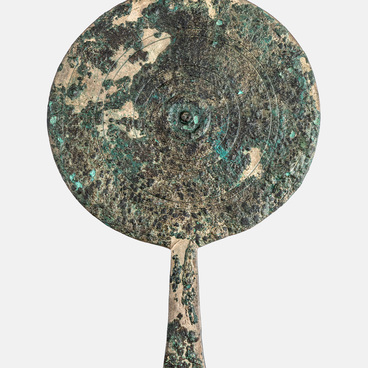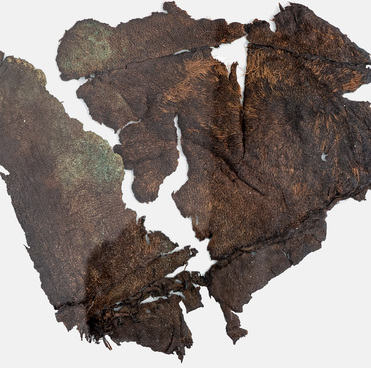The museum exhibition includes a string of beads from mound 3 of the Pobeda burial ground (Kizilsky district, Chelyabinsk region). The burial mound was studied in 1999–2000 by the archaeological expedition of the Arkaim Museum-Reserve and Chelyabinsk State University led by Alexander Tairov and Ilya Lyubchansky. The Pobeda burial ground is located six kilometers northeast of the village of Zingeysky on a flattened hilltop and consists of three mounds with earthy, well turfed fill. Mound 3 was 20 meters in diameter and 0.8 meters high. Five grave pits were found under the mound.
Grave pit 4 was located almost in the center of the mound. In order to dig it, part of the original fill was removed down to the level of the firm land. After the burial, the soil was returned to its place. The pit had a buttress along the long side wall. The remains of a wooden burial structure in the form of a frame made of poles of 5–7 centimeters in diameter were found at the bottom. The buried woman was laid on her back with her arms stretched out along her body. On the wrists of both hands there were bracelets made of stone and glass beads. At the left hand of the buried woman a string of glass, stone and paste beads totaling 13 pieces was found. The beads are different in shape (amphora-shaped, keg-shaped, truncated-drop-shaped and elongated-cylindrical), varied in color (beige with natural flecks of red and white stripes, black with stripes of gray shades, silver, gold and grayish yellow) and made of different materials (glass, stone, paste).
Also, a bronze mirror with a long side handle was placed behind the head of the buried woman; a leather quiver on a wooden base, which was attached to the belt with an iron hook, was found at her feet. Inside the quiver there were 135 bronze-tipped arrows and one iron-tipped arrow. Next to the quiver, a leather bag was placed at the bottom of the pit, containing a round pebble, a stone whetstone, a piece of chalk, a shell, seven fragments of rock crystal, a bone pipe, and pieces of minerals for producing red, yellow and brown paint. An iron knife was found at the shin of the left leg.
Mound 3 was erected in the 5th century BC. Its materials demonstrate the emergence of the tradition of centric-circular layout of burials under the mound fill. The tradition was later developed in the Southern Urals and Lower Volga region.

